#Kalevala
Text

Fairy Maidens of the Waters
1919/20
Artist : Joseph Alanen (1885-1920)
4K notes
·
View notes
Text
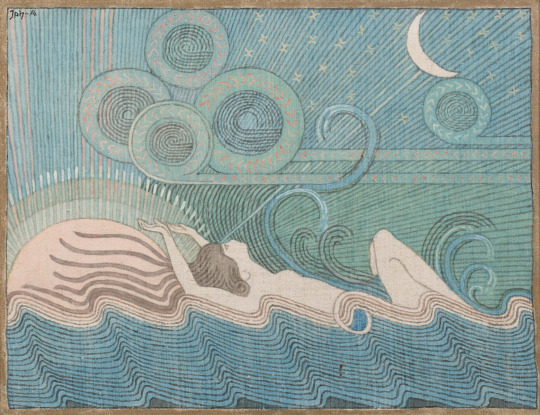
Joseph Alanen (Finnish, 1885-1920) - Ilmatar (1913-1916)
2K notes
·
View notes
Text

Sampo (The Day the Earth Froze) 1959
dir. Aleksandr Ptushko
482 notes
·
View notes
Text


lemminkäinen is a character in kalevala who, in order to win the hand of one of pohjola's daughters, is tasked to shoot the swan of tuoni
shooting the swan of tuoni brings doom to those who attempt it, and lemminkäinen even before attempting this is attacked by a man that shoots him into the tuoni river and eventually is described to be "shattered to pieces" by the son of tuoni who protects the river the swan resides in, which i always thought was a pretty gruesome visual....he's later put back together by his own mother, but there's already a famous painting about that part!
#kalevala#finnish folklore#finnish mythology#lemminkäinen#body horror#hey i Can draw the men of finnish folklore too and not just ladies lol
151 notes
·
View notes
Text
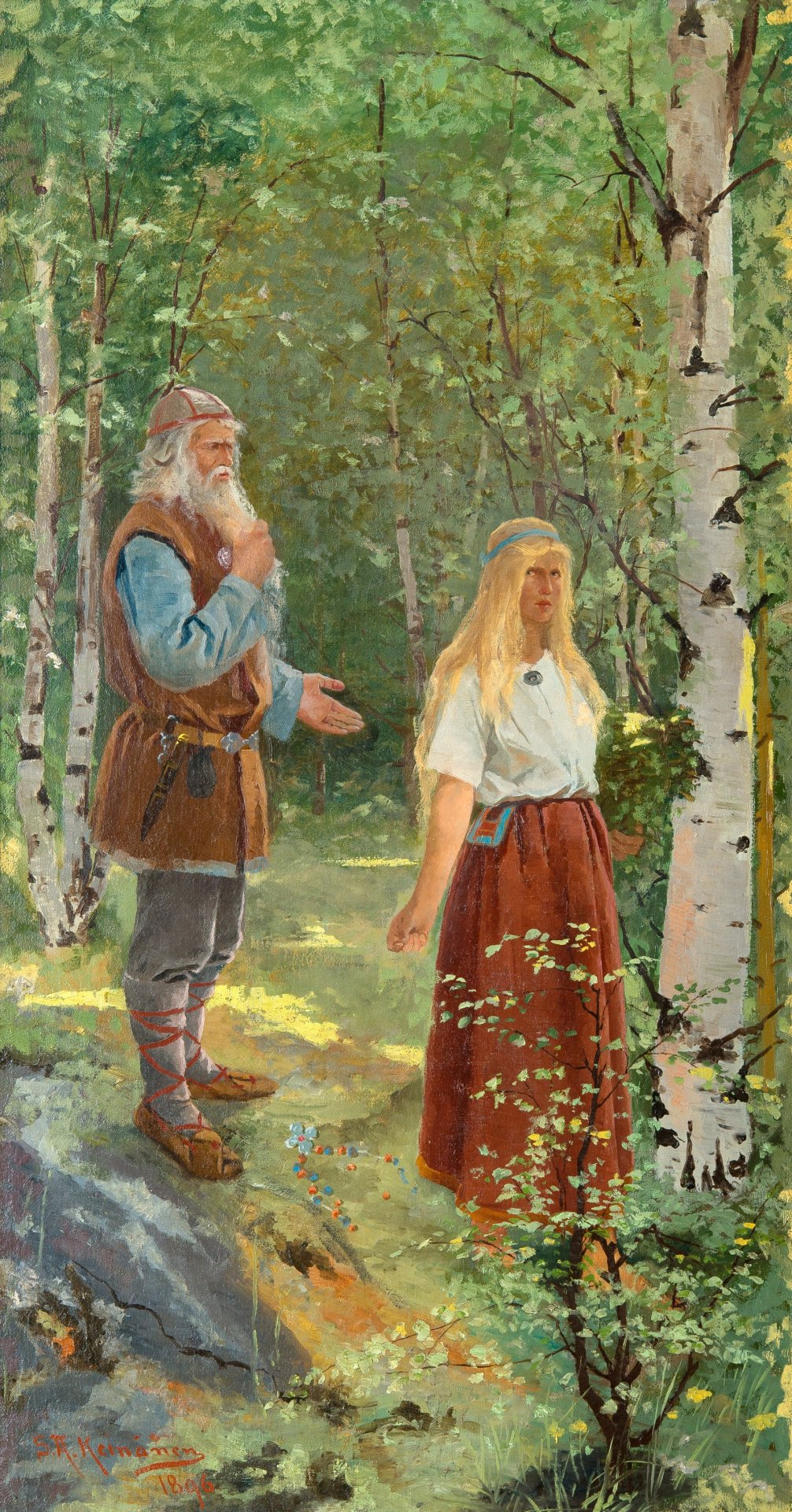
Väinämöinen and Aino, Sigfrid Keinänen, 1896
#art#art history#Sigfrid Keinänen#literary painting#illustration#Kalevala#mythological painting#Finnish mythology#Finland#Finnish art#19th century art#oil on canvas#private collection
150 notes
·
View notes
Text

Munkki Juhani reads a chapter of Kalevala to Lapland meerkats, 2002 - by Joan Fontcuberta (1955), Spanish
126 notes
·
View notes
Text

That bloodstained son of Tuoni / struck the man with his sword,
struck fear with his hunger. /
Threw him to the stream of Tuonela / to the Underworld's underlake.
— Kalevala, rune 14, lines 445–8; 451-2.
My rendition of Tuonenpoika, the guardian of the Finnish underworld, Tuonela; This gore-covered son of Tuoni fishes for unwanted visitors downstream, slaying them. He is said to collect the belongings of all the dead flowing down river Tuoni.
#finnish mythology#kalevala#mythology#finnish folklore#tuonenpoika#art#artists on tumblr#digital art#character design#character art#finnish#my art#godkiller#im playing this version of Tuonenpoika as a character in the Godkiller RPG#godkiller RPG#ttrpg#ttrpg art#his colors are based on high iron waters that are common in finnish bogs#as well as rowan and alder trees/berries that are prominent in finnish myth#the only real descriptors about tuonenpoika tell how much he is covered by blood and gore<3
148 notes
·
View notes
Photo






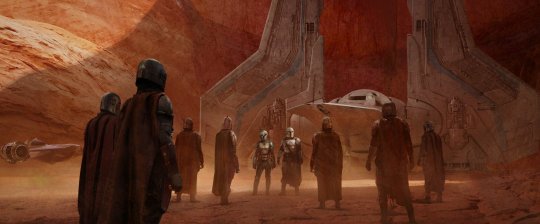



The Mandalorian | Chapter 19 - “The Convert” | Concept Art
#swedit#sw edit#themandalorianedit#din djarin#bo katan kryze#penn pershing#coruscant#kalevala#concept art#star wars concept art#the mandalorian#the mandalorian spoilers
436 notes
·
View notes
Text
Vaka vanha Väinämöinen, inceli iänikuinen
#suomitumppu#suomipaskaa#suomeksi#kalevala#luen kalevalaa ekaa kertaa alusta loppuun ja revin kyllä ihan helvetisti huumoria siitä#Väinö pappa suurimmaksi osaksi vaan itkee kun on kylmä ja yksin ja eksyksissä ja ja ja#siis kyllä muakin harmittaisi mutta äijä hei sulla on aikamoisia loitsutaitoja#ja heti kun menee paremmin niin alat huutelemaan nuorille neidoille että rekehen siitä lääh puuh tyllerö#laulaisitpa itelles selkärangan senkin vässykkä#voi papparukkaa
103 notes
·
View notes
Note
Hi omg I love this thank you for doing it! I have seen a lot about what named sword did or didn't or might have belonged to whom - do we actually know the names of any First Age swords and who wielded them? (other than Eol's cursed pair).
Thank you!
[Anon, this one got so long that I have divided it into 3 parts so people can navigate more easily to weapons that most interest them. Thanks so much for sending this ask, I went down many rabbit holes researching and learned some new things myself.]
The Iron Gang: Anglachel-Gurthang, Anguirel, Angrist
Swords of the First Age, Part 1 of 3
Anglachel
Meaning: Uncertain. Possibly a combination of ang “iron”, lach “flame” and êl “star” (Eldamo). Sindarin.
Maker: Eöl
Owned/wielded by: Eöl, Thingol, Beleg, (Gwindor), Túrin
Notable for: forged from meteoritic iron; given as fee to Thingol for leave to dwell in Nan Elmoth; slaying Beleg
Fate: Reforged in Nargothrond as Gurthang
Then Beleg chose Anglachel; and that was a sword of great worth, and it was so named because it was made of iron that fell from heaven as a blazing star; it would cleave all earth-delved iron. One other sword only in Middle-earth was like to it. That sword does not enter into this tale, though it was made of the same ore by the same smith; and that smith was Eöl the Dark Elf, who took Aredhel Turgon’s sister to wife. He gave Anglachel to Thingol as fee, which he begrudged, for leave to dwell in Nan Elmoth; but its mate Anguirel he kept, until it was stolen from him by Maeglin, his son.
The Silmarillion, ‘Of Túrin Turambar’
Discussion
Anglachel and its mate Anguirel are remarkable weapons. Not only because they were forged from “star iron”, against which the mere iron ores of Earth were no match, but also — certainly in the case of Anglachel and probably likewise with Anguirel — they seem to have possessed a sort of dark power, even sentience.
When Thingol gives Anglachel to Beleg, Melian says:
‘There is malice in this sword. The dark heart of the smith still dwells in it. It will not love the hand it serves; neither will it abide with you long.’
Melian’s words, as usual, prove prescient: Anglachel goes on to be the instrument of Beleg’s demise, wielded against him by Túrin as Beleg attempts to cut the fetters holding his friend captive. Gwindor then briefly carries Anglachel, until he and Túrin come to the Pool of Ivrin and Túrin is released of the madness of his grief over Beleg. Túrin notes that the blade has blackened and become blunt, and Gwindor remarks:
‘This is a strange blade, and unlike any that I have seen in Middle-earth. It mourns for Beleg even as you do.’
The Children of Húrin, Chapter 9: Death of Beleg
The implication seems to be that Anglachel has weathered unnaturally after losing its master.
Presumably because of this damage, Anglachel is reforged in Nargothrond. We do not know who specifically reforged the swords, but it is popular fanon that Celebrimbor, who remained in Nargothrond following his father’s expulsion, may have been involved. After reforging, Anglachel becomes Gurthang.
Gurthang (Anglachel reforged)
Meaning: Iron of Death. Sindarin.
Maker: Eöl, reforged by smiths of Nargothrond
Owned/wielded by: Túrin
Notable for: slaying Glaurung, Brandir, Túrin
Fate: Broken under Túrin’s body in his suicide. Shards buried with him.
The sword Anglachel was forged anew for him by the cunning smiths of Nargothrond, and though ever black its edges shone with pale fire.
The Silmarillion, ‘Of Túrin Turambar’
Then they lifted up Túrin, and saw that his sword was broken asunder. So passed all that he possessed.
The Children of Húrin, Chapter 13: The Death of Túrin
Discussion
Anglachel’s seeming-sentience is amplified by its reforging as Gurthang. In this incarnation, the weapon frequently flickers and flames as if it houses a fire of its own. Most notably, when Túrin prepares to take his own life, Gurthang speaks:
Then he drew forth his sword, and said: 'Hail Gurthang, iron of death, you alone now remain! But what lord or loyalty do you know, save the hand that wields you? From no blood will you shrink. Will you take Túrin Turambar? Will you slay me swiftly?'
And from the blade rang a cold voice in answer: 'Yes, I will drink your blood, that I may forget the blood of Beleg my master, and the blood of Brandir slain unjustly. I will slay you swiftly.'
Then Túrin set the hilts upon the ground, and cast himself upon the point of Gurthang, and the black blade took his life.
The Children of Húrin, Chapter 13: The Death of Túrin
A Tangent: The Enigma of the Sentient Sword
There is no explanation in the legendarium for why or how Gurthang speaks, but a speaking sword is an enduring feature of Túrin’s story that goes all the way back to the earliest version, Turambar and the Foalókë (c. 1917-19, published in The History of Middle-earth Vol. 2: The Book of Lost Tales Part Two). So why did Gurthang speak, and why was this feature so dear to Tolkien? Well, here’s a passage on the death of the hero of the Tale of Kullervo in the Kalevala, a Finnish epic that Tolkien read as a teenager and which was a major inspiration behind the story of Túrin.
Kullervo, Kalervo's offspring,
Grasped the sharpened sword he carried,
Looked upon the sword and turned it,
And he questioned it and asked it,
And he asked the sword's opinion,
If it was disposed to slay him,
To devour his guilty body,
And his evil blood to swallow.
Understood the sword his meaning,
Understood the hero's question,
And it answered him as follows:
"Wherefore at thy heart's desire
Should I not thy flesh devour,
And drink up thy blood so evil?
I who guiltless flesh have eaten,
Drank the blood of those who sinned not?"
Kalevala, Rune XXXVI, translated by W.F. Kirby (1907)
Very familiar, isn’t it? The existence of a talking sword in-universe provides opportunity for all sorts of imaginative explanations, but the influence of Kullervo offers, I think, a compelling Doylist one.
Finally, it’s common to read interpretations where Anglachel and Anguirel exhibit the same properties as Gurthang. But there’s not, to the best of my knowledge, explicit canonical evidence that “speech” was an ability these two swords had from the time of their forging by Eöl. (I was also fascinated to find, during research for this post, that Anglachel and Anguirel were probably not always black. I made a separate post about it.)
Anguirel
Meaning: Uncertain. Possibly a combination of Sindarin ang “iron”, (unattested) uir “fiery” (or Noldorin uir “eternity”), and êl “star” (Eldamo).
Maker: Eöl
Owned/wielded by: Eöl, Maeglin
Fate: Unknown; presumably lost in the fall of Gondolin
Discussion
Compared to Anglachel, we know little of the history of its mate Anguirel, save that it was stolen from Eöl by Maeglin, presumably at the time Maeglin left Nan Elmoth for Gondolin.
Angrist (knife)
Meaning: Iron Cleaver. Sindarin.
Maker: Telchar of Nogrod
Owned/wielded by: Curufin, Beren
Fate: Breaks in Beren’s attempt to cut a second Silmaril from Morgoth’s crown.
Then Beren did Curufin release;
but took his horse and coat of mail,
and took his knife there gleaming pale,
hanging sheathless, wrought of steel.
No flesh could leeches ever heal
that point had pierced; for long ago
the dwarves had made it, singing slow
enchantments, where their hammers fell
in Nogrod, ringing like a bell.
Iron as tender wood it cleft,
and sundered mail like woollen weft.
But other hands its haft now held;
its master lay by mortal felled.
The Lay of Leithian, 3051-3063
Then Lúthien rising forbade the slaying of Curufin; but Beren despoiled him of his gear and weapons, and took his knife, Angrist. That knife was made by Telchar of Nogrod, and hung sheathless by his side; iron it would cleave as if it were green wood.
The Silmarillion, ‘Of Beren and Lúthien’
Discussion
Although of a different maker (and of unknown metallic composition), Angrist has interesting similarities with Anglachel and Anguirel. Besides the initial ang- element, all three blades are noted for an ability to cut through iron, and both Anglachel and Angrist end up “turning against” their masters as a pivotal moment: Angrist by breaking as Beren tries to cut a second Silmaril from Morgoth’s crown, and Anglachel by being the instrument of Beleg's death. As Eöl is also noted to have learned from the Dwarves, some fans have imagined these three blades may have been forged from the same meteoritic iron, or at least to share some of the same “enchantment”.
Note that the quote from Lay of Leithian does not explicitly apply to Angrist, which is a name for Curufin’s knife that Tolkien first used in the 1937 Quenta Silmarillion.
Part 2 | Part 3
#weapons#anglachel#gurthang#anguirel#angrist#the children of hurin#the lay of leithian#kalevala#turin turambar#beleg#eol#maeglin#curufin#anon
129 notes
·
View notes
Text
FINNISH ART TOURNAMENT ROUND 1 POLL 8
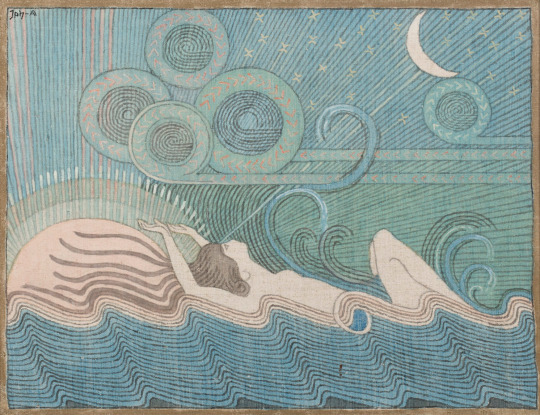

62 notes
·
View notes
Text
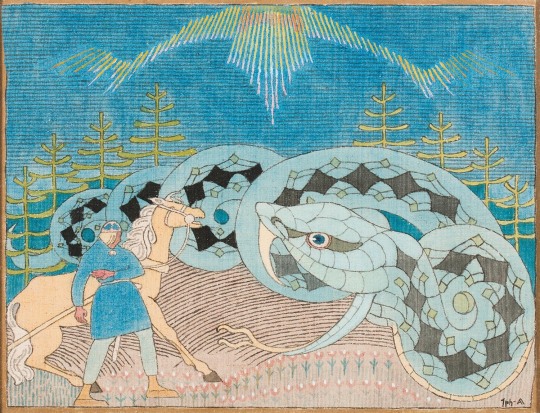
Joseph Alanen (Finnish, 1885-1920) - Lemminkäinen and the Great Snake (1919-1920)
461 notes
·
View notes
Text
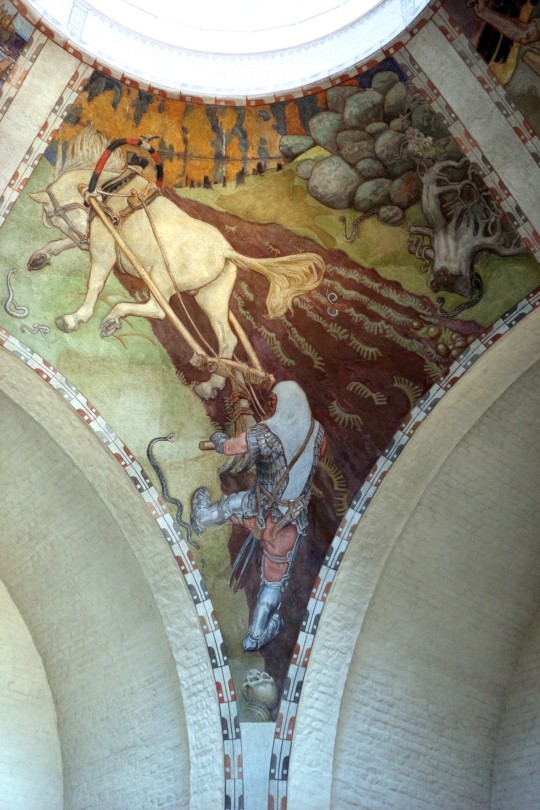
Ilmarinen ploughing the Viper-field (1928) by Akseli Gallen-Kallela (1865-1931), is one of the Kalevala frescoes in the National Museum of Finland.
(Picture source for image)
#art#art history#horses#horse#horse art#akseli gallen kallela#akseli Gallen-Kallela#frescoes#ploughing#1900s art#18th century art#1920s art#national museum of Finland#finland#kalevala#finnish art#finnish artist#finnish
82 notes
·
View notes
Text
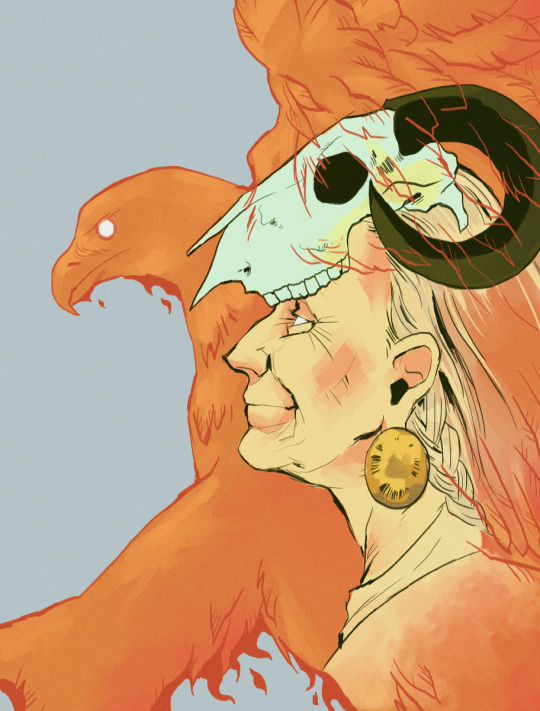
louhi is the powerful witch queen of pohjola in kalevala, and is often interchangeable with loviatar, the finnish goddess of death and disease
though here i wanted to focus on one of her magic abilities which is turning into kokko, a giant bird that's described to be made of iron or fire, or to at least breathe fire (i went with the fire take here)
204 notes
·
View notes
Text

© Niilas Nordenswan Photography – Polulla, North Karelia, Finland
#fine art photography#bnw photography#visual poetry#forests#late autumn#path#foggy path#paganism#finnish folklore#north karelia#kalevala#artists on tumbl#silence#niilas nordenswan
886 notes
·
View notes
Photo

Tapio – The Finnish god of forests and the hunt
Tapio is a Finnish forest spirit or god in Finnish mythology. Hunters prayed to him before a hunt. His wife is the forest goddess, Mielikki (Ref). He is the father of Annikki, Tellervo, Nyyrikki (the god of hunting), and Tuulikki. Fitting the Green Man archetype, Tapio has a beard of lichen and eyebrows of moss.
Tapio is a major character in Kalevala, the Finnish national epic based on Finnish and Karelian folklore, the hero Lemminkäinen offers him and Mielikki prayers, gold and silver so he can catch the Hiisi elk.
Tapio, the personified forest, was sometimes depicted as being the size of a fir tree, fierce-looking, like a human being in the front, but like a gnarled old tree from behind. Often the forest deity was female, occasionally an especially beautiful woman, who enticed hunters or woodcutters staying in the woods overnight; but he, too, turned out to be a rotten old stump upon closer scrutiny. The various forest deities and spirits were generally capricious in nature and had to be constantly placated by those who were dependent on their favours. Thus hunters made offerings to the deity and made sure they did not break any taboos in the forest, such as making excessive noise or shooting unusual birds that might be the forest spirit in disguise.
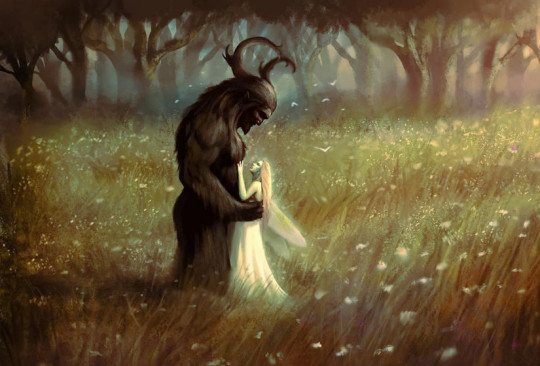
木にまつわる伝説・神話
伝説の樹木の神々 (18)
タピオ 〜 フィンランドの森と狩りの神
タピオはフィンランド神話に登場する森の精霊、または神である。彼の妻は森の女神ミエリッキ(参照)である。アンニッキ、テレルヴォ、ニャイリッキ (狩猟の神)、トゥーリッキの父である。タピオは、グリーンマンの原型にふさわしい人物で、地衣類の髭と苔の眉毛を持っている。
タピオは、フィンランドとカレリアの民話に基づくフィンランドの民族叙事詩『カレワラ』の主要人物である。『カレワラ』では、英雄レミンカイネンがヒイシのヘラ鹿を捕まえるために、彼とミエリッキに祈りと金と銀を捧げている。
森の精霊を擬人化したタピオは、モミの木の大きさで、正面から見ると人間のような獰猛な姿をしているが、後ろから見るとニョロニョロの老木のような姿で描かれることもあった。また、森の神は女性であることが多く、特に美しい女性で、森に一晩滞在する猟師や木こりを誘うこともあったが、彼もよくよく観察すると、腐った古い切り株であることが判明する。森の神々や精霊は気まぐれな性格で、その恩恵にあずかる者は常になだめなければならなかった。そのため、猟師は神に供物を捧げ、森での禁忌を破らないように気をつけた。例えば、過剰に音を立てたり、森の精霊の変装かもしれない珍しい鳥を撃ったりしないようにした。
#trees#tree legend#tree myth#tapio#mielikki#kalevala#karelian folklore#finish mythology#god of forests#tree spirit#lemminkäinen#legend#myths#folklore#green man#nature#art#forest
188 notes
·
View notes